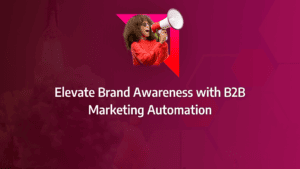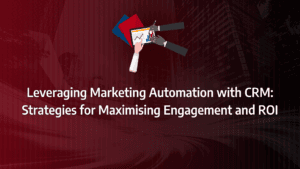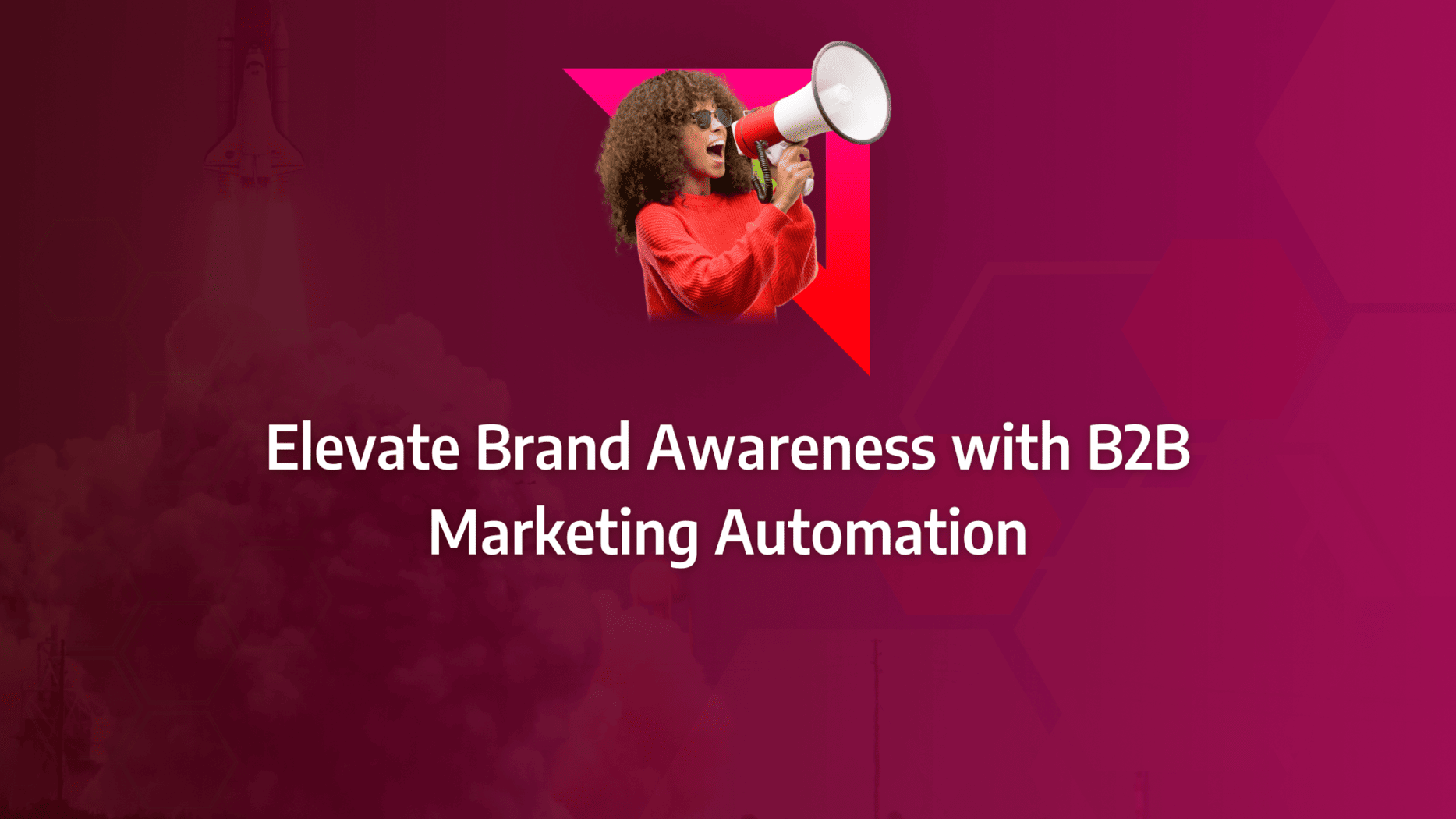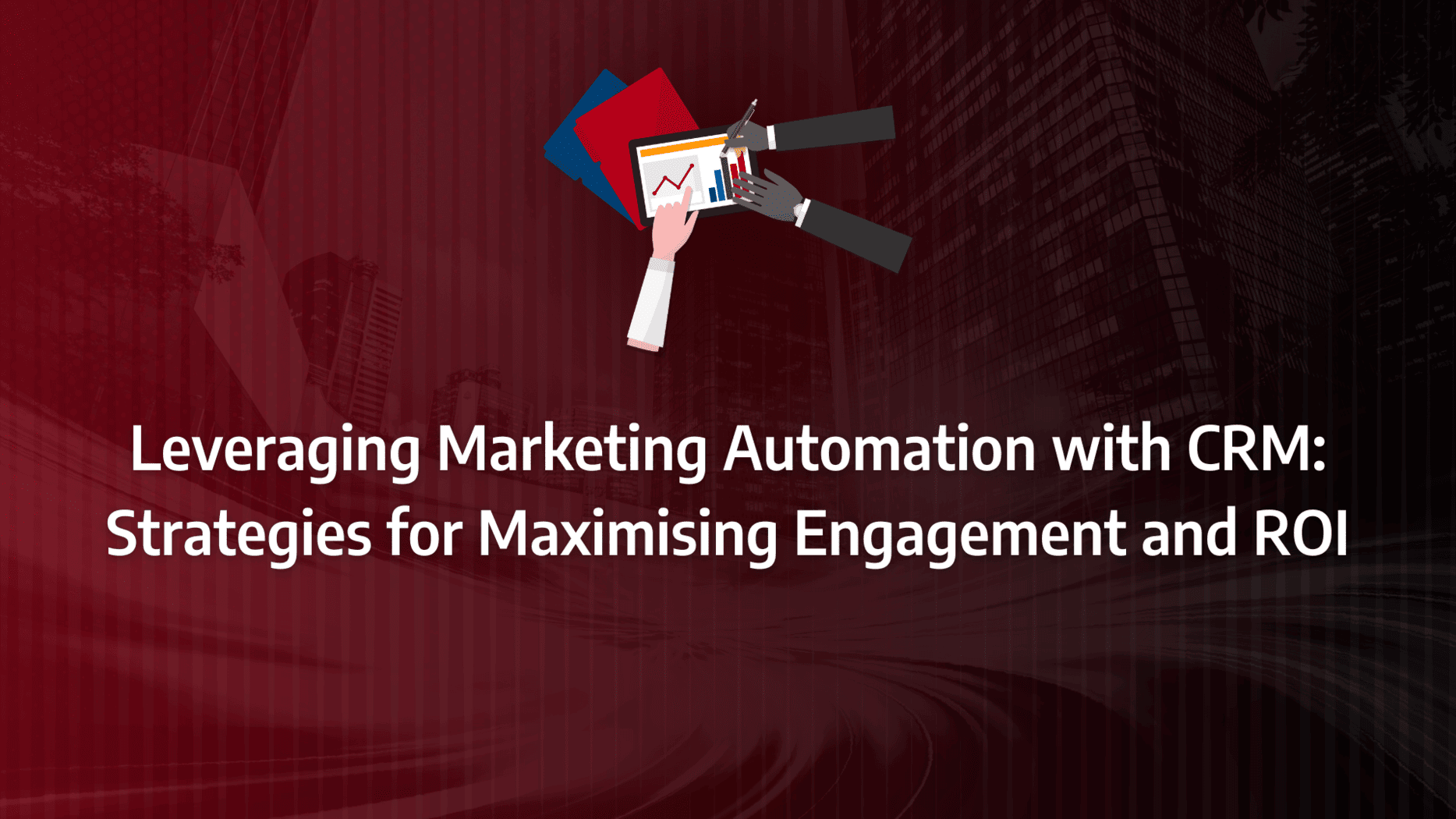Marketing automation has become the cornerstone for businesses aiming to streamline their operations and maximise ROI. But how can you ensure that your automation strategy is not just another system, but a powerhouse driving your marketing success?
In this post, you’ll discover proven strategies that leading B2B companies are using to tailor their marketing automation for enhanced lead generation and personalisation. From overcoming common pitfalls to maximising your investment, this guide offers the insights you need to transform your B2B marketing approach.
- Implementing marketing automation in B2B requires a clear alignment with business goals to ensure the tools enhance rather than complicate operations.
- Tailoring your automation strategies to fit B2B audiences, such as using account-based marketing tactics, can significantly improve personalisation and engagement.
- Maximising ROI through marketing automation involves continuous measurement and optimisation, focusing on data-driven decision-making.
- Overcoming common challenges, like integration issues and data accuracy, is critical to the success of your marketing automation efforts.
- Staying ahead of the curve by adopting emerging trends like AI-driven automation and predictive analytics can give your B2B strategy a competitive edge.
What is B2B Marketing Automation?
B2B marketing automation is the systematic process of optimising marketing tasks by utilising workflows and triggers, ultimately enhancing team productivity. The primary goal of marketing automation for B2B is to capture, assess, and nurture leads and accounts efficiently, ensuring they are directed to the most appropriate sales team members. This precision in lead assignment significantly contributes to improving conversion rates and reducing the time required for follow-ups.
Another key objective is to maintain continuous engagement with leads through sales or marketing channels, ensuring that prospects are nurtured until deals are successfully closed. B2B marketing automation strategy is central to this, as it provides the framework for consistent, personalised communication that aligns with each stage of the buyer’s journey.
What Matters Most?
From our experience, prioritising data quality is non-negotiable; without reliable data, even the most sophisticated automation systems falter. Clients often discover that aligning automation with the customer journey not only enhances each touchpoint but also deepens customer relationships. Typically, integrating your tech stack to avoid fragmentation is crucial for maintaining a seamless flow of insights and ensuring that your automation efforts are cohesive and strategic. We’ve seen how these elements form the bedrock of successful marketing automation strategies, driving sustained growth and customer satisfaction.Get In Touch
Benefits of B2B Marketing Automation
Here’s a breakdown of some of the most significant advantages B2B SaaS marketing automation can offer businesses:
- Streamlined Lead Generation and Nurturing Marketing automation for B2B dramatically simplifies the lead nurturing process. With automation tools, businesses can seamlessly capture leads, automate nurturing email sequences, and qualify prospects for the sales team based on pre-defined criteria. These platforms also have the capability to segment customers automatically, tailoring communication based on their preferences, behaviours, and roles within their respective companies. This not only speeds up lead processing but ensures more relevant, targeted interactions, improving the overall marketing automation ROI.
- Enhanced Lead Context and Insight When several individuals from the same organisation express interest in a product, the likelihood of a successful sale increases. However, many marketers still focus solely on individual leads, which rarely results in a sale—fewer than 1% of individual marketing-qualified leads convert. Through B2B marketing automation, marketers can gather crucial contextual data, such as identifying buying groups within organisations and understanding the specific roles of each stakeholder. By sending more informed, higher-quality leads to sales, businesses can achieve greater revenue growth and ensure a higher success rate in deal closures.
- Task Automation for Greater Efficiency On average, marketers save up to 25 hours per week by leveraging automation tools. Tedious tasks such as lead scoring, triggered email campaigns, and data collection are handled automatically, giving marketing teams the freedom to focus on strategic initiatives. B2B SaaS marketing automation empowers teams to spend less time on manual processes and more time refining their campaigns for maximum impact.
- Smarter, Data-Driven Decision Making Beyond simply automating tasks, B2B marketing automation strategy empowers teams to make more informed, data-driven decisions. These tools provide detailed insights by tracking and analysing key metrics, enabling marketers to understand which channels yield the highest engagement, what behaviours precede conversions, and which content resonates most with different buyer segments. With this information, marketing teams can continuously refine their approach, optimising their strategy at every stage of the sales funnel to boost marketing automation ROI and ensure long-term success.

What are the 4 Pillars of B2B Marketing Automation?
When it comes to B2B marketing automation strategy, there are four foundational pillars that determine the success of any implementation: People, Process, Promotion, and Platform. Each pillar plays a critical role in ensuring the long-term effectiveness of your marketing automation for B2B, and they must work in harmony for the strategy to deliver measurable results. Let’s explore each pillar in detail.
People
It might seem obvious, but people are the backbone of any successful B2B SaaS marketing automation initiative. No matter how sophisticated your marketing automation tools are, they are useless without skilled individuals to manage, optimise, and scale campaigns. It’s essential to hire a team member with extensive experience in marketing automation or, at the very least, someone proficient in sales automation, email marketing, or database management. These skill sets are transferable and can make a significant difference in executing your B2B marketing automation strategy.
Additionally, it’s not just about the team managing the platform; executive and sales buy-in is equally critical. Without the support of leadership, technology often goes under-utilised. Sales leaders, such as the VP or Director of Sales, should champion marketing automation and ensure that their teams are held accountable for acting on qualified leads. This alignment between marketing and sales can make or break your campaign, as demonstrated by a case where one client’s sales leader blamed marketing for poor results, despite the sales team failing to follow up on qualified leads. In such scenarios, executive intervention may be necessary to ensure alignment and maximise the marketing automation ROI.
Process
The process behind your marketing automation efforts is the second most critical, yet often misunderstood, element of success. Even with the best people, a lack of clear, defined processes can lead to failure. In one instance, a client’s lack of structured processes caused inconsistency across campaigns, affecting the overall results. To ensure that doesn’t happen, it’s essential to build robust processes around content creation, campaign execution, and lead flow to sales.
Process development doesn’t stop at implementation; it requires constant management, training, and regular review. By maintaining proactive oversight and measurement, teams can identify gaps and refine processes over time. Establishing a process-driven foundation for your B2B SaaS marketing automation strategy allows for scalability and consistency in your marketing efforts.
Promotion
Once you’ve established a solid team and a streamlined process, the next vital pillar is promotional content. Without relevant, engaging content, no B2B marketing automation strategy can succeed. Your marketing automation team must work closely with sales, marketing, and customer support to produce materials that engage prospects at every stage of the buyer’s journey.
A well-structured promotional strategy is key, as it maps out content delivery for each phase, from awareness to conversion. Consistent refinement based on campaign performance ensures your messaging remains impactful and drives action, keeping your pipeline robust and healthy.
Platform
Finally, we come to the platform, the technology enabling the automation of your marketing efforts. Although it is a critical component, the platform itself is merely an enabler—it will not deliver results without the other three pillars. There are a wide variety of B2B marketing automation platforms available, from more affordable solutions like HubSpot and Act-on to higher-end tools like Eloqua and Marketing Cloud. Each offers its own set of features and can be tailored to meet your business’s unique needs.
What’s important to remember is that the platform should serve your strategy, not dictate it. With the right team, processes, and promotional content in place, you can make any platform work for you, ensuring the long-term success of your marketing automation for B2B initiatives.
What Should You Expect from a B2B Marketing Automation Platform?
Choosing the right B2B marketing automation platform is a critical decision that can significantly impact the success of your business. With a multitude of platforms available, it’s essential to focus on what truly matters to your business both now and in the future. Below are five key steps to help you select the best solution, ensuring that your B2B marketing automation strategy is built on a solid foundation.
1. Consider Your Current Business Needs
It’s easy to be enticed by the endless features displayed on a software vendor’s website. However, the first step is to focus on your business’s immediate needs. Start by creating a detailed list of the features that are essential for your operations right now, and benchmark all available platforms against this list.
A great place to begin is by aligning your marketing automation for B2B with your content strategy. Without a clearly defined strategy that supports every stage of the buyer’s journey, investing in marketing automation can lead to misalignment and wasted resources. Evaluate your upcoming campaigns, the type of content you plan to generate, and where you intend to distribute it. This will provide clear direction on what you require from a B2B SaaS marketing automation platform.
2. Consider Your Future Business Needs
When evaluating tools, it’s not enough to think solely about the present; your future needs should also be front and centre. Implementing B2B SaaS marketing automation takes time and resources, and frequently switching platforms can become a costly and disruptive process. It’s crucial to choose a platform that can scale with your business as it grows.
Ask yourself the following questions:
- Is it scalable? Some platforms are tailored specifically for smaller businesses, which might be perfect if you’re not planning on expanding. However, if growth is on the horizon, ensure the platform can scale and serve medium to large enterprises.
- Is pricing flexible? Many systems operate on a subscription basis. If you anticipate rapid growth, check the available pricing tiers and how easily you can upgrade as your needs evolve.
- How often does the vendor update the software? In the fast-paced world of digital marketing, regular updates are a must. A vendor that frequently releases new features and enhancements is a good sign that they are keeping up with trends and future-proofing your investment.
Source: NucleusResearch
3. Integration with Your CRM
Alignment between marketing and sales is essential for driving revenue. Any successful B2B marketing automation strategy relies heavily on the smooth collaboration between these two teams, and this can only be achieved if your chosen platform integrates seamlessly with your CRM system.
By ensuring that your marketing automation for B2B integrates with your CRM, you can avoid common pitfalls like miscommunication, redundant processes, and missed opportunities with qualified leads. With both systems working together, you’ll have a full 360-degree view of your leads, prospects, and customers, empowering sales and marketing to collaborate effectively to create a seamless customer experience.
4. Evaluate the Support Services Available
Support is an often-overlooked but crucial aspect when choosing a B2B marketing automation platform. Most platforms offer a combination of live chat, ticketing systems, and phone support, but your access to these may vary depending on the subscription package you choose.
It’s important to assess your in-house team’s capabilities. If your team is new to automation or lacks technical expertise, you may require more comprehensive support in the beginning. Additionally, explore the platform’s user support materials and training resources. As your team grows more familiar with the platform, they will likely want to explore its advanced features, and having access to robust training materials will be invaluable.
Our Tactical Recommendations
From our experience, automating lead nurturing workflows tailored to customer behaviour can dramatically accelerate funnel movement, leading to higher conversion rates. Clients often discover that automating content distribution to precisely target the right audience at the right moment maximises engagement and reinforces trust. Typically, integrating marketing and sales automation systems doesn’t just streamline operations; it enhances the customer experience by ensuring consistent, relevant interactions across all channels.Get In Touch
10 Essential Features for Your B2B Marketing Automation Platform
When selecting the ideal B2B marketing automation platform, it’s important to prioritise features that not only streamline processes but also align with your broader B2B marketing automation strategy. Below are the ten must-have capabilities that ensure you get the most out of your investment, maximising efficiency and delivering a strong marketing automation ROI.
1. Built-in Search Engine Optimisation (SEO)
Your platform should come with integrated SEO tools that help optimise your content, making it easier for your target audience to find you via search engines. Effective SEO features allow you to strategically place keywords, such as those targeting your specific industry, ensuring you’re visible to potential leads when they search for solutions.
2. Integrated Social Media Publishing and Tracking
To truly harness the power of B2B SaaS marketing automation, your platform must enable seamless social media publishing and tracking. Social media remains a critical channel for reaching prospects, and integrated functionality ensures you can automate posts while tracking engagement metrics in real time.
3. Blogging Platform Integration
An integrated blogging platform is crucial for any successful B2B marketing automation strategy. Blogging remains a central pillar of inbound marketing, driving organic traffic and helping build thought leadership. With this feature, you can easily create, schedule, and automate blog posts that align with your broader content strategy.
4. Powerful Email Engine
Email remains one of the most effective channels in B2B marketing. A robust email engine, capable of creating targeted, personalised campaigns, is a non-negotiable. Whether you’re nurturing leads or engaging existing customers, the right email engine ensures your marketing automation for B2B delivers results.
5. Landing Page Builder and Lead Capture
A landing page builder, paired with strong lead capture capabilities, is key to converting website visitors into leads. Your platform should provide an intuitive tool for building high-converting landing pages and forms that seamlessly capture lead information, feeding directly into your CRM for follow-up.
6. Automated Lead Nurturing
Effective B2B SaaS marketing automation platforms must offer automated lead nurturing functionality. This feature allows you to guide leads through the buyer’s journey with personalised, timely content that keeps them engaged. Whether through email, content recommendations, or tailored offers, lead nurturing automation is essential for maintaining momentum in the sales funnel.
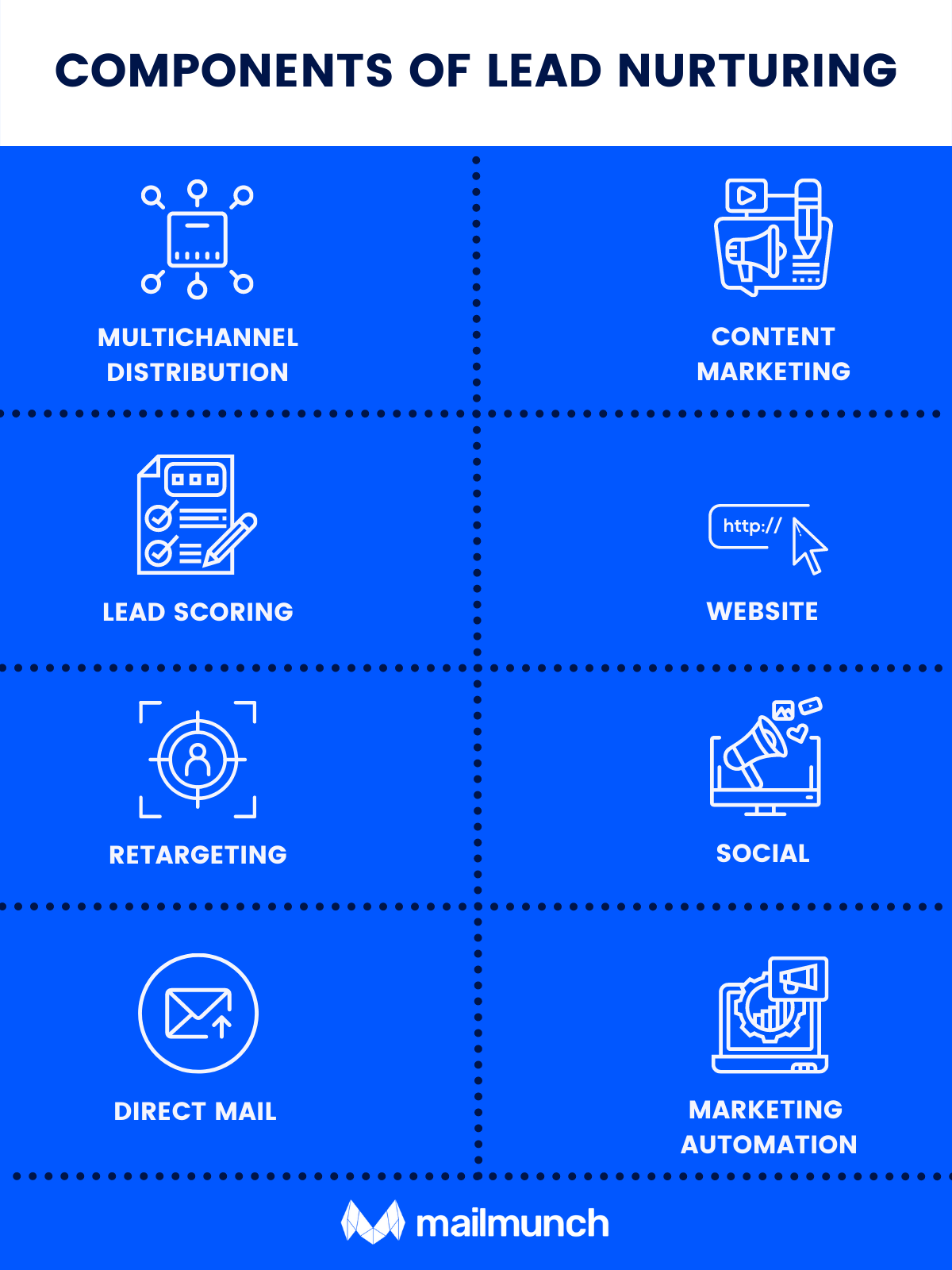
7. Comprehensive Leads Database
A centralised leads database that tracks every touchpoint, interaction, and behaviour is vital for understanding your prospects and customers. The database should allow for easy segmentation based on behaviour, demographic data, or stage in the buyer’s journey, ensuring that your B2B marketing automation strategy is data-driven and precise.
8. Lead Scoring System
A good lead scoring system helps sales teams prioritise leads based on engagement and readiness to buy. By assigning scores to leads based on actions taken—like downloads, clicks, or site visits—you ensure your sales team focuses on those closest to making a purchase decision, improving both efficiency and marketing automation ROI.
9. Seamless CRM Integration
Your B2B marketing automation platform must integrate smoothly with your CRM system to ensure the seamless flow of data between marketing and sales teams. This integration prevents data silos and enables a more cohesive view of each lead’s journey, improving both collaboration and results.
10. Detailed Analytics and Reporting
Finally, the platform must offer robust analytics and reporting capabilities. Detailed insights into the success of your campaigns, including which channels are delivering the best results, are essential for continually refining your B2B marketing automation strategy. Analytics should allow you to track the effectiveness of each campaign and assess how leads are moving through the funnel, informing better decision-making.
How Do You Automate B2B Prospecting?
In the world of B2B marketing automation for B2B, automating your prospecting process can dramatically increase efficiency while ensuring your team focuses on high-priority tasks. To do this effectively, it’s essential to focus on four core pillars of prospecting: List Building, Outreach, Metrics, and Lead Management. Let’s explore each area and how to maximise their impact within your B2B marketing automation strategy.
1. List Building
The foundation of successful B2B SaaS marketing automation begins with building high-quality prospect lists. This step is crucial as it ensures you’re targeting the right audience. If your list is inaccurate or poorly segmented, you risk wasting time and resources on campaigns that fail to deliver results. Moreover, targeting the wrong prospects can lead to being flagged as spam or facing high customer churn rates due to poor fit.
To build a great list, you must first define the right demographic for your product. Consider key factors such as company size, location, industry, and revenue. These criteria will help you identify and segment your prospects more effectively.
2. Identifying and Collecting Contact Data
Once you’ve established your target criteria, the next step is to gather contact information. There are several reliable methods to collect prospect data:
- Company websites: For small to medium businesses, you can often find the contact details of decision-makers on their official websites.
- LinkedIn (and LinkedIn Sales Navigator): LinkedIn is a powerful tool for targeting professionals based on specific criteria. With a bit of research, you can often deduce email addresses using standardised formats like firstname.lastname@company.com.
- Google Search: Often, email addresses are available but not prominently listed. A simple Google search like “[firstname] [lastname] email” can sometimes reveal contact information.
3. Research and Segment
Once you have a list of potential prospects, the next step is to dive deeper into research. Even if you’ve gathered basic contact information, you need to segment and understand your audience further. Different prospects may be interested in your product or service for various reasons, so tailoring your messaging is crucial for engagement.
Segmenting your prospects based on their industry, company size, or previous interactions allows you to personalise outreach and improve the chances of conversion.
4. Managing Prospects and Personalising Follow-ups
Once you’ve started reaching out to prospects, the next challenge is managing your follow-ups and personalising content. You’ll need a system in place that tracks when to follow up, which prospects are engaging, and when to stop pursuing certain leads.
Consider the following questions to help guide your follow-up strategy:
- Who? Use segmented lists to personalise your outreach and content to the appropriate prospects.
- When? Ensure you space out emails appropriately, avoiding multiple emails to the same prospect in one day, and don’t let too much time pass between follow-ups.
- When to stop? Know when to remove someone from your campaign, whether they’ve already booked a meeting or requested no further communication.
Source: Forrester
The Best B2B Automation Tactics and Strategies to Implement Today
Incorporating automation into your B2B marketing automation strategy is essential to staying competitive, enhancing customer engagement, and improving operational efficiency. Let’s dive into some of the most effective automation tactics you can use today to elevate your marketing automation for B2B and deliver a greater marketing automation ROI.
1. Adding Chatbots for Customer Service
Automating customer service with chatbots is an increasingly popular strategy. Chatbots can field basic customer questions before they reach your support team, allowing customers to find quick solutions themselves. This not only improves customer satisfaction but also frees up valuable time for your team to focus on more complex queries.
For more intricate issues, chatbots can capture the context of the interaction, helping you refine your website to prevent future queries of a similar nature. Integrating this with your B2B SaaS marketing automation ensures that customer interactions are streamlined and efficient, leading to quicker resolution times and higher customer retention.
2. Automating Loyalty Programmes
A highly effective B2B marketing automation strategy is automating your loyalty programmes. Loyalty programmes encourage repeat purchases, fostering long-term customer relationships. With automation, you can reward customers based on their purchases without any manual intervention. You can establish workflows that assign rewards automatically, ensuring a seamless experience.
Moreover, marketing automation software allows you to send automated promotional emails, encouraging customers to join loyalty programmes or take advantage of special offers. This not only enhances the customer experience but also maximises the efficiency of your team, contributing to a better marketing automation ROI.
3. Leveraging Social Media Automation
Social media remains a powerful channel for B2B engagement, and automating your social media activities can significantly boost your overall efficiency. On average, people spend over five hours per day on their phones, much of which is dedicated to social media. This creates a unique opportunity for businesses to connect with their audience in a meaningful way.
Around 47% of businesses currently use some form of marketing automation to manage their social media efforts. By using platforms like Hootsuite or Xara, you can automate the publishing and tracking of social media posts, engage with prospects at the right time, and even republish high-performing content. These tools allow you to maintain an active presence on social media while saving your team time, making social media automation a key component of your B2B SaaS marketing automation.
4. Integrating All Systems in One Place
One of the most impactful B2B marketing automation strategies is integrating your various marketing tools, such as your CRM, email marketing platform, and social media management tools, into one cohesive system. This integration creates a streamlined workflow where data flows effortlessly between platforms, providing your team with a complete view of each customer interaction.
With an integrated system, your business can save both time and resources while gaining a holistic understanding of your customers’ needs and behaviours. This level of insight allows for more targeted communication and improved customer engagement, ultimately leading to a higher marketing automation ROI.
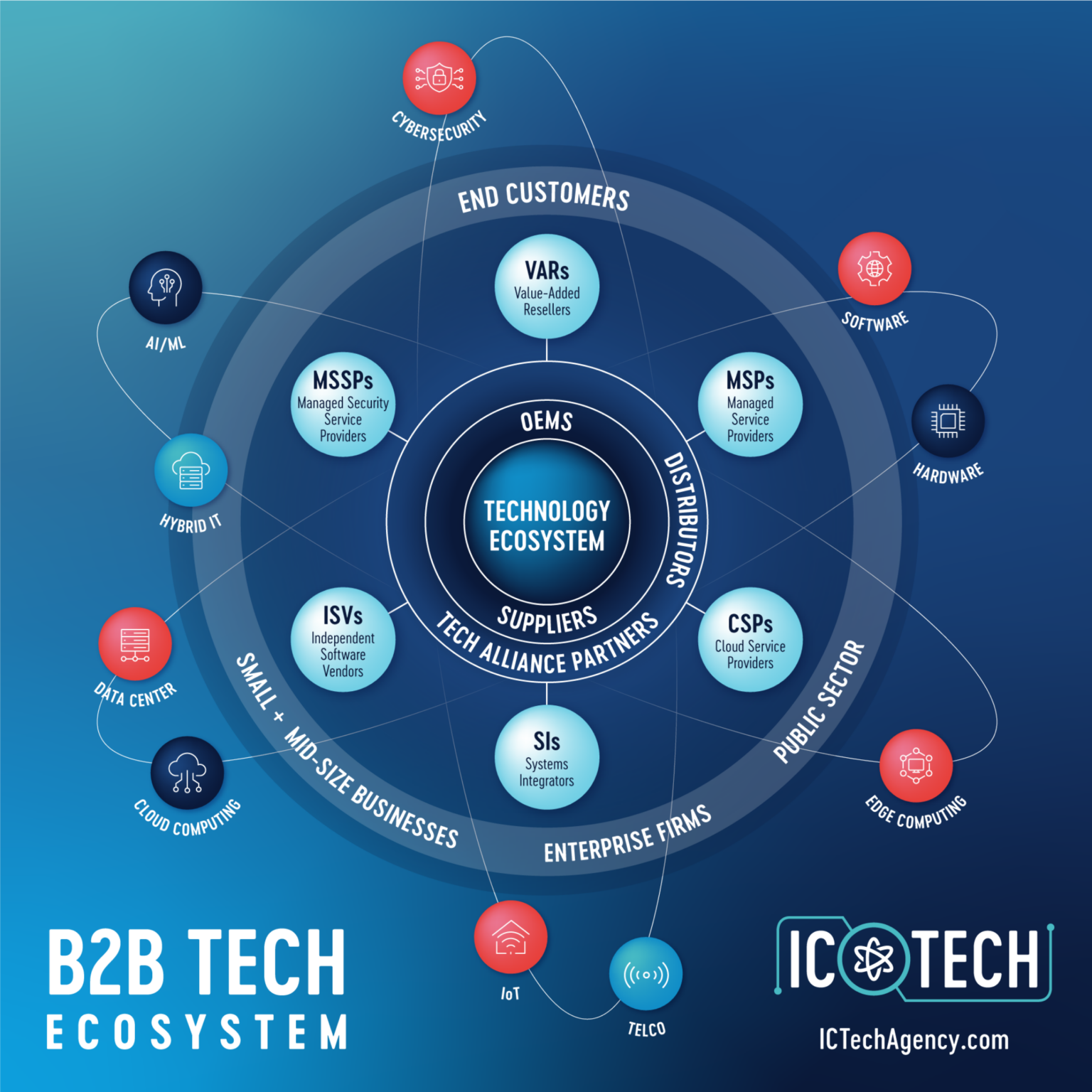
5. Optimising Your Omnichannel Approach
Omnichannel marketing automation is all about creating a seamless and consistent experience for your customers across all touchpoints, whether through email, SMS, push notifications, or social media. The goal is to ensure that no matter where a customer interacts with your brand, the experience feels personalised and connected.
A great way to facilitate this is by incorporating chatbots across various platforms, from your website to your mobile app and even social media. Tools like WotNot offer a cost-effective solution for businesses looking to automate customer support, lead generation, and personalised recommendations across multiple channels. By integrating the chatbot with your CRM, e-commerce, and email marketing systems, you can provide a consistent and engaging customer experience across all platforms.
6. Personalised Dynamic Website Content
Dynamic content personalisation is an advanced tactic that takes your B2B marketing automation strategy to the next level. By leveraging customer data—such as browsing history, cookies, purchase records, and demographic information—you can create a highly tailored experience for each visitor to your website.
Think of it like a digital chameleon: your website adapts to each visitor’s preferences, showing them content, offers, and product recommendations that are most relevant to their needs. This level of personalisation leads to a more engaging experience, increasing the likelihood of conversion while enhancing customer loyalty.



